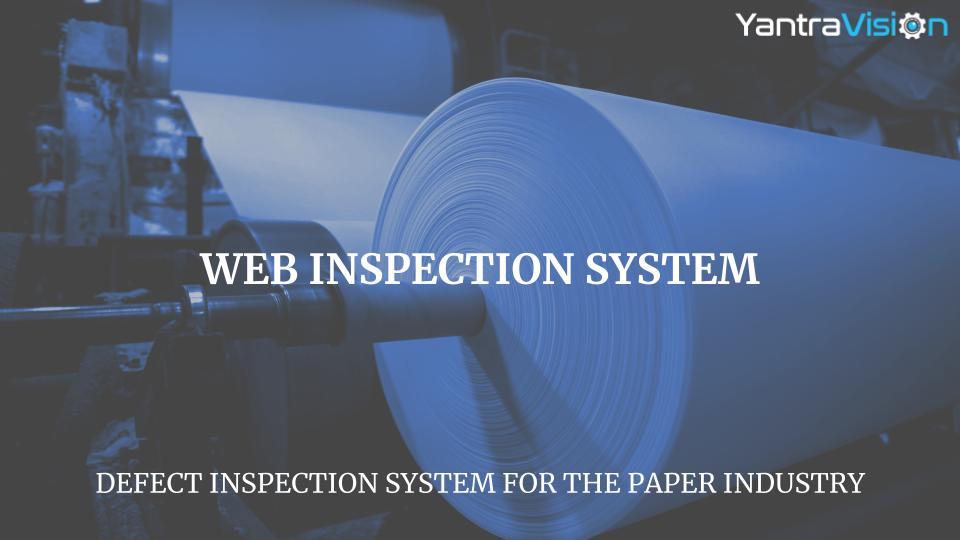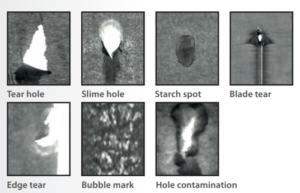DEFECTS IN DUPLEX PAPER
The YantraVision Web Inspection System identifies defects in large webs and is used in various paper mills to detect manufacturing defects, including duplex paper. Duplex paper manufacturers produce paperboard that is used to manufacture cartons for FMCG and Pharma.
Duplex paper is typically manufactured as 3.25 m wide, 10-12 Ton rolls with a machine speed of 300-350 m/min. Often, defects appear on the paperboard that are not discovered until they reach the customer’s place.
Some common defects that appear on duplex paperboard are:
- Holes
- Paper Fiber Deposit
- Coating Lumps
- Edge Tears
These defects can severely impact the quality of each paper roll, making the paper unusable for printing or using in any other end product. As a result, paper mills have to deal with customer complaints and reject defective rolls, which leads to waste.
Various process errors produce the above-mentioned defects. For example, holes sometimes form on the paper surface, which expands as the paper moves through the machine. In some cases, these holes may even lead to web breaks. It is crucial to swiftly identify and eliminate these errors to minimise the damage caused by them. Other defects like coating lumps, coating streaks etc. may be caused by some dirt accumulation on the doctoring blade, which leads to uneven coating application.
We are working with a set of duplex paper manufacturers in India requiring a web inspection system to identify holes, coating lumps, fibre deposits and coating defects. The goal of the inspection system is to identify any of these defects and immediately alert an operator so that they can take corrective action in the process. A demo system was demonstrated to these customers using various defect samples before starting work on deployment on the Paper machine or the Reel to Sheet machine.
WEB INSPECTION SYSTEM FEATURES
The following are all the features of the inspection system that have been offered to the customer:
Defect Rollmap: The rollmap accurately represents the defect locations on each roll and the defect type. Additionally, a marking system marks the location of defects on the roll. The marking helps in planning the roll cutting and rejecting defective sheets in the sheeting process.
Roll Report: A roll report provides all the critical information and metrics, like the count of each defect type, average size, location and more. The roll report helps to identify and eliminate the root cause of the defects.
Critical Defect Alarm: An alarm alerts the operator to take necessary action whenever a critical defect occurs.
CUSTOMER BENEFITS
The main benefits the inspection system provides are:
- Improved customer satisfaction by delivering a high-quality product.
- Roll grading for different segments of customers.
- Process improvements to avoid defects.
The system generates immediate ROI, as it reduces the amount of wastage and customer claims. Most of our customers expect a healthy payback period for the capital investment due to a reduction in labour and production of higher quality products, leading to fewer rejections.


